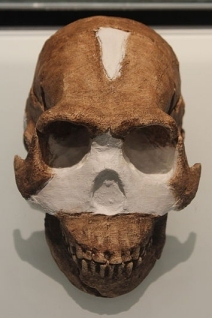Jay L. Wile's Blog, page 39
May 23, 2016
The Power of Grace
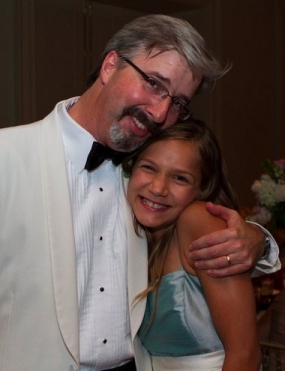
Larry Taunton and his Ukrainian daughter, Sasha. (color version of a photo that is in the book)
A couple of weeks ago, I posted a review of a book entitled, The Faith of Christopher Hitchens. I had never heard of the author (Larry Taunton), but I enjoyed his writing style and his obvious intellect. As I mentioned in a different post, part of the book deals with Sasha, his daughter who he and his family adopted from the Ukraine. As an adoptive father, his loving words about his daughter touched me deeply, and when I found out that he had written a book specifically about her adoption, I had to read it. It’s called The Grace Effect, and I have to say it is probably the best book I have read since Quivering Daughters . The Grace Effect isn’t nearly as emotional as Quivering Daughters, but it is very meaningful on at least two levels.The first level is obvious. This is primarily a story about a family who followed God’s leading and ended up radically changing a young girl’s life for the better. The simple version of the story is that Larry’s wife and three boys went on a short-term mission trip to the Ukraine. They went there to improve the facilities at one of Ukraine’s many orphanages: #17. There, they met a young girl named Sasha, and they all fell in love with her. They felt the Lord leading them to adopt her, not knowing anything of the challenges that they would face. With the help of some incredibly generous Christian brothers and sisters, they convinced Larry to adopt Sasha. As a result, Larry, his wife, and two of his boys traveled back to the Ukraine to get her.
The long version of the story, however, is much more interesting. They knew that such adoptions were expensive, but they had no idea how expensive. Not only are the legal costs high, but the Ukrainian government is so intensely corrupt that pretty much every step in the lengthy adoption process requires a bribe. Judges cancel hearings, orphanages delay appointments, etc., and the process comes to a halt. In order to get the process back on track, the person in charge has to be given a “gift.”
While Taunton never indicates the total cost, he mentions discussing Sasha with some well-to-do Christian friends, which resulted in two incredibly generous donations of $10,000 each. In addition, he discussed Sasha with Frank Limehouse, dean of the Cathedral Church of the Advent. He only discussed Sasha to get some wisdom regarding her health issue (she is HIV positive), but a few days later, Limehouse handed him a check and simply said:
That’s from the people of Advent. You get that little girl and bring her home. (p. 184)
So we know that the adoption costs were well over $20,000, much of which went to the bribes that were necessary to get greedy people simply to allow someone else to help a little girl.
Does the price tag sound unreasonable to you? After all, imagine what more than $20,000 could do to help children right here in the United States! Why “waste” that money to help one little girl who is already being taken care of in an orphanage? That’s the way the world thinks, but it’s not the way God thinks.
God has His reasons for leading us in the ways He wants us to go, and our job isn’t to assess whether or not the leading is “reasonable.” Our job is to make sure the leading is from God and then follow it regardless of the consequences. If you read this book, you will realize the joy that such obedience can bring. While our adoption story has none of the incredible sacrifice and drama of the adoption story in this book, it was also the result of following the Lord’s leading, regardless of how “unreasonable” it seemed. Doing so blessed my wife and I beyond measure.
As I said, there are two levels of meaning to this book. The first is how one family, aided by their brothers and sisters in Christ, can transform the life of a young girl. The second is more philosophical. Throughout the story, Taunton paints an incredibly dismal picture of the orphanage Sasha lived in and her treatment at the hands of the workers. It’s not that she was abused; she was just not treated as a person with any intrinsic worth. Consider, for example, what happened in the Taunton home after Sasha broke some dishes she was trying to carry. Larry’s wife, Lauri, lost her temper and yelled at Sasha. Then this happened:
After a moment, Lauri collected herself. “Sasha, I am sorry for raising my voice at you. I know you were only trying to help.” “That’s okay,” Sasha said. “You don’t have to apologize to me. I’m different.” Lauri paused from gathering the larger shards of glass and looked up. “What do you mean, you’re different?” Sasha then explained that people didn’t need to apologize to her because she didn’t deserve it. (p. 168)
Simply put, Sasha was raised to believe that she is worthless.
Taunton also contrasts the squalor in which the orphan children lived (they didn’t even have toilet paper, for example) with the lifestyles of the people who were supposed to be taking care of them. The judge who ultimately decided whether or not they could adopt Sasha parked her car outside the bleak orphanage. It was a big, expensive Mercedes. How could the judge afford such a luxury car? Specifically because she oversaw adoptions. The Tauntons had to give her $1,500 just to keep her from canceling her scheduled court date with them. In essence, the judge was living a life of luxury specifically because the orphanages in her country are so horrid that people from other countries feel the need to adopt the children who live in them.
Why does Taunton bring up these issues? Let me quote him, because I think he puts it quite well. He describes a painting that depicts Jesus raising the dead son of the widow at Nain (Luke 7:11-15). He then says:
The man is withered, his body cold and colorless. Except for his arm. It is there that Jesus is touching him. Radiating outward from the Master’s grip, the flesh is warm and pink. So skillfully has the artist rendered this scene that it’s easy to imagine that his whole body will soon be likewise restored.
Since the fall of man, there has never been a Christian nation. What there have been are nations with varying degrees of Christian influence. In the parts of those societies touched by Christ, the blood courses, fortifying, revitalizing, and sweeping away the contaminants as it goes. At the cold and colorless extremities are those places where the healing power of His Church has not yet penetrated. Here one finds cruelty, injustice, and indifference.
As militant secularists rush to banish Christianity from American public life, I have sought to give you a snapshot of what this country – indeed, what any country – will look like should they succeed. (p. 218, emphasis his)
He sees the bleakness of Sasha’s old life as an apt illustration of what happens in a country with no Christian influence.
Peter Hitchens, the brother of famous atheist Christopher Hitchens (the subject of Taunton’s other book), wrote a book called The Rage Against God. In it, he describes what brought him from atheism back to Christ. It was living in the former Soviet Union. He saw what atheism did to a country as a whole, and that convinced him he did not want to be an atheist. In my review of his book, I said I wasn’t convinced by that line of reasoning. I still don’t think I am. However, Larry Taunton makes the case much better than Peter Hitchens.
If you are touched by Sasha’s story, you might consider supporting her ministry, Sasha’s Hope, which seeks to prevent child trafficking.
May 19, 2016
I Was Wrong About Homo naledi
A reconstruction of Homo naledi’s skull (click for credit)
Last September, the media was abuzz about a group of fossils which was supposed to represent a new species: Homo naledi. The fossils were special in many respects, but there were two that stood out: First, the fossils had characteristics that indicated they might be related to modern humans. Second, they looked like they were the result of deliberate burial, which indicates distinctly human behavior.After reading the scientific papers that had been published regarding the fossil, I wrote a blog post about it. I was very skeptical of the authors’ interpretation that the fossils represented some species of ancient human. To my untrained eye, the fossils seemed to be characteristic of extinct apes, like those found in the genus Australopithecus. In addition, it was hard for me to believe that the collection of fossils even belonged to a single species. There seemed to be too many variations among the fossils, especially when it came to the skulls. Of course, I was quick to point out:
Now please understand that I am not a paleontologist. I am not even a biologist. I am simply a nuclear chemist who has taken an interest in the creation/evolution controversy. As a result, you need to take my comments for what they are worth.
I have been following the scientific papers that have been published since September, and I think I can unequivocally say that my comments weren’t worth very much. Because of several different analyses (both in the secular and creationist literature), I have changed my mind. Once again, who knows how much this conclusion is worth, but I now think that the balance of the scientific evidence indicates that Homo naledi is a single species, and it is probably human.
What accounts for this about-face? There are several factors. A detailed analysis of the foot indicates it is very human-like, and a similarly detailed study of the hand shows that while the fingers are more curved than one would expect, the other characteristics line up with what you find in a human hand. In addition, a preliminary reconstruction of the way it walked indicates a fairly standard human gait.
However, the most important factor in changing my mind was a recently-published special issue of The Journal of Creation Theology and Science. Since it is an open-access journal, I would encourage anyone who is interested in a thoroughly scientific evaluation of Homo naledi from a creationist perspective to read it.
In this special issue, Dr. Todd Wood does a baraminology analysis using an extensive set of fossil characteristics. He shows that Homo naledi groups together with humans, while other clearly non-human fossils do not. In addition, Jean O’Micks does a separate baraminology analysis that comes to the same conclusion. Finally, Dr. Kurt Wise evaluates the fossils from a paleontological perspective, confirming that they are all probably from the same species and that they are probably the result of some kind of burial ritual.
I personally think that Dr. Wise has the best overall summary of what Homo naledi means:
The presence or absence of brow ridges, thin or thick skull bones, flexed or rounded occipital bones, more horizontal or vertical orientation of the hip, straight or curved toes or fingers, large or small body size, large or small teeth, gracile or robust mandible, and a host of other characters probably have little or no impact on a human’s survivability. They certainly do not define a human being. It would even seem that brain size has little importance in that regard – at least as long as it is at least as large as the brain of H. floresiensis, well less than half the brain size of modern human populations. At the very least, as Berger et al. conclude, we need to cease defining humanity on the basis of individual morphological features. In fact, if we are to have ANY possibility of success in defining the humanity of fossils based upon morphological characters (and even that is questionable), it will be by means of holistic data sets and the kind of multivariate methods used in quantitative baraminology.
In other words, there is just too much diversity among human beings to use individual fossil characteristics to come to an evaluation of humanity. As a result, we have to start using more detailed methods, such as baraminology, to evaluate potentially human fossils. That was my mistake in looking at the original Homo naledi papers. I was focusing on individual fossil characteristics.
So based on what we know right now, I think Homo naledi represents a specialized, post-Flood human being. Of course, I am willing to change my mind again, if new data or new analyses come to light.
May 16, 2016
Another Creationist Prediction Confirmed
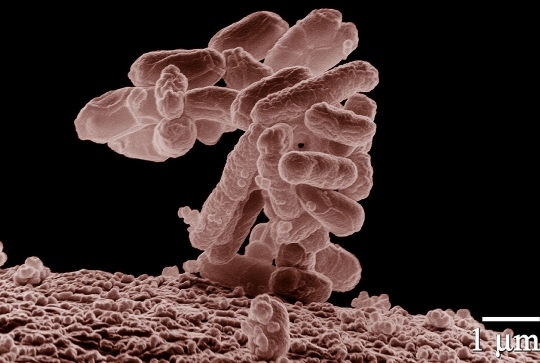
A cluster of the bacteria discussed in the article
Dr. Richard Lenski, an evolutionary biologist at Michigan State University, has been running a long-term experiment on evolution. Indeed, it has been named the LTEE (Long-Term Evolution Experiment). It started back in 1988 and is still running today. It has followed 12 populations of the bacterium Escherichia coli through more than 50,000 generations, examining how environmental stress changes the bacteria’s genetic and physiological characteristics. More than 6 years ago, I discussed how the project was confirming the creationist view of the genome, and it continues to do just that. In addition, it has inspired another experiment that specifically confirmed a creationist prediction while, at the same time, falsifying an evolutionary one.
To understand what has happened, we need to go back to 2008. In that year, the LTEE showed that even though Escherichia coli normally can’t make use of a chemical called citrate when oxygen is present, one of the their populations developed that ability after 31,500 generations of existence.1 As a result, it was dubbed the “citrate plus” population. How did that happen? At the time, no one knew. However, evolutionists thought it was the result of some rare event or combination of events, exactly the kind upon which evolution depends. New Scientist put it this way:
By this time, Lenski calculated, enough bacterial cells had lived and died that all simple mutations must already have occurred several times over.
That meant the “citrate-plus” trait must have been something special – either it was a single mutation of an unusually improbable sort, a rare chromosome inversion, say, or else gaining the ability to use citrate required the accumulation of several mutations in sequence.
Lenski himself was bold enough to write:
So the bacteria in this simple flask-world have split into two lineages that coexist by exploiting their common environment in different ways. And one of the lineages makes its living by doing something brand-new, something that its ancestor could not do.
That sounds a lot like the origin of species to me. What do you think?
Not surprisingly, a recent experiment has shown that the evolutionary predictions of Lenski and New Scientist are wrong. At the same time, it demonstrated that the predictions of both intelligent design advocates and creationists were correct.
What was the experiment? It was an attempt to reproduce the LTEE’s results – repeatedly. If one of the evolution-inspired predictions was correct, it should be very, very hard to evolve a population of citrate-using Escherichia coli in an oxygen environment. After all, Lenski believed that this was the origin of a new species, and that should be very rare. Indeed, as New Scientist indicated, the ability to use citrate in the presence of oxygen was “something special” that required “rare” conditions. However, there were scientists with another view of the situation. Intelligent design advocates suggested it as well, but I will quote a creationist (Dr. Georgia Purdom) who suggested it:
Mutations which lead to adaptation, termed adaptive mutations, can readily fit within a creation model where adaptive mechanisms are a designed feature of bacteria allowing them to survive in a fallen world. Since E. coli already possess the ability to transport and utilize citrate under certain conditions, it is conceivable that they could adapt and gain the ability to utilize citrate under broader conditions. This does not require the addition of new genetic information or functional systems… (emphasis mine)
If Dr. Purdom is correct, it shouldn’t be at all difficult to produce citrate-using Escherichia coli in an oxygen environment. Adaptive mutations are part of a designed mechanism that produces predictable results in the presence of environmental stress. Thus, given the correct environmental stress, you should repeatedly get the same adaptive result. What did the experiment find? It repeatedly got the Escherichia coli to develop the ability to use citrate in the presence of oxygen, as long as the environmental stress was consistent. Here is how the authors put it:2
Using similar media, 46 independent citrate-utilizing mutants were isolated in as few as 12 to 100 generations. Genomic DNA sequencing revealed an amplification of the citT and dctA loci and DNA rearrangements to capture a promoter to express CitT, aerobically. These are members of the same class of mutations identified by the LTEE. We conclude that the rarity of the LTEE mutant was an artifact of the experimental conditions and not a unique evolutionary event. No new genetic information (novel gene function) evolved. (emphasis mine)
In other words, they were able to repeatedly get the same results as the LTEE very quickly. That means there was no “rare” set of events leading to the ability to use citrate in the presence of oxygen, and this was definitely not any kind of speciation event. Instead, the same genetic changes seen in the LTEE were achieved repeatedly after a short amount of time. This tells us that the ability to use citrate in the presence of oxygen is the result of adaptive mutation, as predicted by Dr. Purdom nearly 8 years ago.
I would also point out the conclusion that I highlighted with boldface type. The researchers conclude that no new genetic information was needed to produce this change. This had been determined back in 2012, confirming what both intelligent design advocates and creationists had predicted, but it is nice to see it clearly spelled out in the scientific literature.
REFERENCES
May 12, 2016
People Can Compensate for Bad Genes!
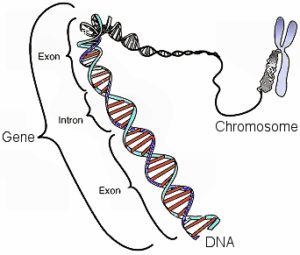
In DNA, a gene is made up of exons and introns. The exons determine the protein that is made.
DNA is incredibly complex, so it’s really not surprising that the more we examine it, the more it challenges our notions of how it works. Consider, for example, genes. They make up less than 2% of human DNA, but they are important, because they tell the body what proteins to make and how to make them. At one time, evolutionary scientists actually thought that the vast majority of the rest of human DNA was useless junk. However, like most evolutionary ideas, that notion has been falsified by the data.Despite the fact that they represent less than 2% of human DNA, genes are obviously important, because most of the chemical reactions that occur in our bodies are controlled by and depend on the proteins that genes specify. Because of the amazing design behind DNA, however, a single gene can actually produce many, many different proteins. This is because, as shown in the drawing above, a gene is actually constructed of introns and exons. The exons represent functional modules in the gene, and the introns separate those modules. When a gene is read, the exons can be grouped in many different ways, producing many different proteins. Because only the exons are used in the production of proteins, geneticists often study an organism’s exome, which is the collection of all the exons in a organism’s DNA.
When it comes to animals, studying how the exome affects overall health is difficult, but straightforward. Scientists can damage the gene of an animal and see what health consequences arise. This is referred to as a gene knockout, and it is an invaluable tool for learning what a gene does. For example, when the gene lovingly referred to as PRDM9 is knocked out of mice, they become sterile.1 Thus, we know that the PRDM9 gene is essential for reproduction in mice.
When it comes to humans, it’s not ethical to do gene knockouts. However, you can study a population and find examples of people who have a natural mutation that has disabled a gene. By comparing that person’s health to similar people who have a working version of that gene, you can learn something about how the gene affects health. A recent study published in the journal Science did just that, and the reported results were surprising, to say the least!
The investigators examined the exomes of 3,222 adults in the United Kingdom who are of Pakistani descent. More than 800 of them had rare mutations on a total of 781 different genes. Those mutations are thought to disable the genes, so essentially, these people experienced natural gene knockout. In fact, 38 of the individuals had disabling mutations on genes that were thought to be essential for good health. Indeed, it was thought that the loss of those genes would produce disease. However, of those 38 people, only 9 showed any evidence of the expected disease. The others were apparently disease-free, despite having a bad gene that is thought to cause the disease!2
That’s not the only surprise from the study. Remember the PRDM9 gene? When that gene is mutated to non-functionality in mice, the mice are sterile. However, there was one woman in the study whose PRDM9 gene was mutated to the point that it is apparently nonfunctional, but she had a child! Obviously, then, while a mutated PRDM9 gene in mice causes sterility, it doesn’t necessarily do the same thing in people.
How can we understand these results? It’s too soon to say with any certainty, but I have a few thoughts. First, it’s possible that what we think are gene-destroying mutations don’t actually destroy the genes. Thus, even though the mutations the authors saw are generally thought to break the genes, perhaps the genes are (at least partially) functional after all. Second, we know that there is a process called RNA editing, that changes the product of a gene before the protein determined by that gene is actually made. It’s possible that some kind of RNA editing is “fixing” the product of the broken genes so that even though the gene is broken, the protein is still produced properly. Finally, it’s quite possible that the human genome is more redundant than the genomes of animals, allowing people’s DNA to compensate for broken genes in a way that an animal’s DNA cannot.
Of course, the authors are already doing another study on another group of people (South Asians living in East London) to see what else can be learned. Most likely, it will take many more studies to get to the bottom of these fascinating results. However, one thing is already quite clear: we have a lot more to learn about DNA and how it relates to health!
REFERENCES
May 9, 2016
Another Mother’s Day Drama
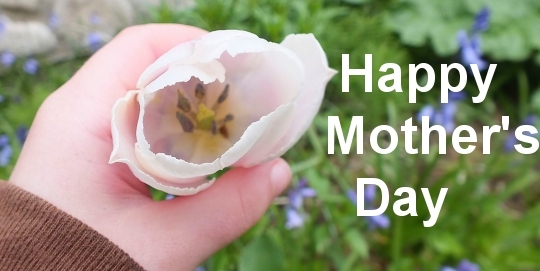
Click for credit
Yesterday was Mother’s Day, and I was asked to do a drama for the church service. I have a Mother’s Day Drama that I really like, but it has been done at least three times at our church, so I thought I should write a new one. Also, we have three incredibly talented young ladies who are all willing to do dramas. I have used each of them in different dramas over the past few months, but I decided it was time to put them all on stage together. In the end, I thought they did a fabulous job.
As always, feel free to use this script in any way you think will be meaningful to the body of Christ, but I would appreciate a credit.
Mom: I Don’t Value You the Way I Should
(Two teens enter. They each have a cell phone. The phones don’t have to be visible right now. They will be used later. The teens talk as they walk to center stage, stopping once they get there.)
Cloe: Are you going to the party after the game tonight?
Emily: (really annoyed) No. My mom won’t let me. What about you?
Cloe: (annoyed as well) No. My mom won’t let me, either.
Emily: Mom’s are so annoying.
Cloe: Tell me about it! Come on. It’s just a bunch of unsupervised teens having a party at night. What could possibly go wrong?
Emily: I know, right? They treat us like we’re children! We’re 15 years old now. We’re practically adults!
(Another teen, Lisa, enters from the same place the first two entered. She is walking slowly, head down, depressed. She heads in the same direction as the other two teens but doesn’t really see them.)
Emily: (indicating the teen who just entered) Hey…who’s that?
Cloe: It’s the new girl. I don’t know her name.
Emily: She looks upset.
(By this time, Lisa should have reached the other two girls. She’s not really paying attention, so Cloe steps in her way, being as friendly as possible.)
Cloe: Hi. I’m Cloe. What’s your name?
Lisa: (Not startled, but not interested in socializing) I’m Lisa.
Cloe: This is Emily. We’re going to the game tonight. Wanna come with us?
Lisa: (Trying to be nice, but obviously not in the mood) No. Thanks. I just need to go home.
Emily: (Trying to cheer her up) Come on. It’ll be fun. We’ll introduce you to everyone.
Lisa: (Any other day, she would be really appreciative, but not today) I’m sorry. I just don’t want to.
Cloe: What’s the matter?
Lisa: It’s my mom.
Emily: (Ready to launch into another “mom’s are so annoying” speech) I know exactly what you mean!
Cloe: (Jumping in to join in the complaining) Mom’s are so annoying. I mean, they treat us like….
Lisa: (Getting more upset) It’s just….I haven’t seen her in a while.
Emily: (surprised) What?…Why not?
Lisa: She’s in the Navy.
Cloe: (interested) What does she do in the Navy?
Lisa: She’s on a battleship. She operates the big guns.
Cloe: That’s so cool!
Lisa: Not really. She’s been deployed for more than a year now.
Emily: (in disbelief) You haven’t seen your mom in more than a year?
Lisa: (frustration showing) No, and now…She was supposed to come home today. I was really looking forward to seeing her, but I just learned that some kind of “top secret” situation has happened, and she has to stay deployed. We don’t even know when she’ll be coming back.
Cloe: (can’t think of what to say) I…I’m so sorry…I…
Emily: (trying to cheer her up) Look, why don’t you come to the game with us. Maybe it will take your mind off…things.
Lisa: I’m sorry. I should get home to my dad. He’s just as upset as I am.
(Lisa leaves, looking back at them as if to say she really wishes she could go with them. The other two stand in silence for a moment.)
Cloe: (Pulling out her cell phone) Uh….I…I have to make a call.
(Cloe moves away from Emily. Ideally, she gets isolated in a spot of light. Emily is now frozen.)
Cloe: Hi, Mom? It’s me…..I…I just want to say I’m sorry for how I acted this morning. I was…I was just disappointed. (Waits for her mom to say she understands) Thanks for understanding. You always do.
(Cloe freezes and ideally, the spot on her goes out. Emily pulls out her phone walks to the other side of the stage, ideally with a spot on her.)
Emily: Hi mom. Are you planning to be home tonight? (waits for answer) Good. I was…uh…thinking of skipping the game and just coming home. Maybe…we could watch a movie together? (waits for answer) I’d like that, too. (pause) I love you mom.
(BLACKOUT)
May 5, 2016
The Faith of Christopher Hitchens
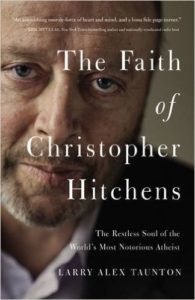
An interesting book about an even more interesting friendship.
Larry Alex Taunton is a columnist who started the Fixed Point Foundation, an apologetics organization that is probably best known for arranging high-profile debates between well-known atheists and Christians. For example, it arranged the famous “God Delusion” debate between Dr. Richard Dawkins and Dr. John Lennox. Other notable debates include The “Is God Great” debate between Christopher Hitchens and Dr. John Lennox and the “God on Trial” debate between Christopher Hitchens and Dinesh D’Souza. Because his organization has arranged such debates (and because he often moderates them), Taunton has met and gotten to know the participants, including Christopher Hitchens, who many recognize as an outspoken atheist. Despite the fact that Hitchens and Taunton were polar opposites when it came to their core beliefs, they developed a deep friendship, which is the topic if this book.Taunton’s publisher suggested that he write the book shortly after Hitchens passed away in late 2011, but Taunton wasn’t interested at the time. He didn’t see how he could write a book about their friendship that was both interesting and uplifting. However, as time passed and he thought more about it, he realized that there was a way he could get the job done. I have to say that he was right. This book is both very interesting and quite uplifting. I have already relayed one very uplifting part of this book at the end of a previous blog post. Now it’s time for me to share more.
The most interesting aspect of the book, of course, is the friendship that developed between these two men. It’s interesting simply because it’s so rare these days. Many people spend so much time characterizing those with whom they disagree as “the enemy,” it seems unfathomable that a Christian apologist and a vocal atheist could be real friends. Indeed, as Taunton himself says:
The truth is, there were those who did not want us to be friends. This is a sad commentary on our society and the degree to which we have lost our ability to reason with one another. I speak exclusively to Christians when I say this: how are we to proclaim our faith if we cannot even build bridges with those who do not share it? (p. xi)
I couldn’t agree more. Of course, the problem goes both ways. Taunton reports on one Hitchens fan who was taken aback by their friendship:
That same night while speaking to an audience of some 1,200 people, Christopher made a passing reference to a road trip we had taken together through the Shenandoah Valley. At the book signing following the event, a man, an atheist and a devotee of all things Christopher Hitchens, asked his hero why he would undertake such a journey. “Have you ever seem the Shenandoah at this time of year? It’s beautiful.” Having signed the book, Christopher closed it, handed it back, and reached for the next one. “That’s not what I meant. I meant why would you do it with him? You know, a Christian?” “Because he is my friend, and you, sir, are an idiot. (p. 115)
I can just hear Hitchens saying that to his crestfallen fan!
Taunton’s reports of his trip through the Shenandoah Valley with Hitchens and their later trip through Yellowstone National Park are fascinating. He discusses how they read the Gospel of John together and the questions they asked one another. The accounts show a completely different Hitchens from the bombastic “New Atheist” who has no time for those who quote the Bible. Indeed, that’s a running theme throughout Taunton’s description of Christopher Hitchens.
Taunton says that, like a dishonest accountant, Hitchens kept “two sets of books.” One set of books (one personality) was open to the public, and a completely different set of books (a completely different personality) was available to his friends. In no way does this imply that Hitchens was dishonest. Taunton is simply saying that Hitchens’s public persona was carefully crafted to communicate his atheism as effectively as possible. His private persona, on the other hand, was one of a genuinely nice guy who was still a devoted atheist, but at the same time was willing to discuss “the other side” congenially among his friends.
I think it’s clear why Hitchens kept those two sets of books. His public persona was much more effective than his private persona, which is best demonstrated by something Taunton discusses after Hitchens’s last debate, which was against Taunton himself:
As I stepped off the stage, 60 Minutes reporter Steve Kroft brushed past me on his way to interview Christopher. Kroft’s producer, Frank Devine, approached me with a quizzical look on his face. “Did I hear Hitchens say that the two of you studied the Bible together during your drive?” “That’s right.” “But he’s an atheist and you’re an evangelical Christian, aren’t you?” “That’s right.” “I would’ve liked to have been a fly on the wall for that conversation! Did you two nearly kill each other?” “No. Not at all. We are friends. He asked thoughtful questions about the Gospel of John and I did my best to answer them. I enjoy his company.” With that, he shrugged and walked away. Apparently, a civil, thoughtful discussion was of no interest to 60 Minutes. (p. 133 – emphasis mine)
Unfortunately, the sentence I highlighted in bold could be applied to a large number of media organizations, as well as a large number of individuals. This may very well explain why the most caustic people on both sides of an issue are the ones who get most of the attention.
Did their mutual study of the Gospel of John change Hitchens’s mind? I think it’s pretty clear that it did not. Taunton admits that according to Hitchens’s family, God didn’t even come up in the conversations that Hitchens had during his last days on earth. Of course, because of Hitchens’s “two sets of books,” Taunton holds out hope that in his deep, private persona, Hitchens was considering a conversion to Christianity. Some writers have hyped that hope, and no one would be happier than me if it turned out to be true. However, even after reading Taunton’s book, I don’t think it is.
Before I end this long-winded review, I want to point out another reason why you should read this book. It shows that you can’t judge a person’s beliefs simply because of his belief (or lack thereof) in God. For example, Hitchens was an atheist, and a vocal one at that. However, did you know that he was also pro-life? He wasn’t in favor of making abortion illegal, but he said that it is clear that unborn children are people. Taunton quotes a video of Hitchens where he says:
It seems to me obvious from the discoveries of biology and embryology that the concept ‘unborn child’ is a real one…And it has to be granted to the Church that it has made this a centerpiece of its ethic and morality.
Now, of course, most atheists are not pro-life. Thus, you might think that a vocal atheist like Hitchens would toe the “party line.” However, he did not. While most of his fellow atheists were opposed to President Bush’s response to 9/11, Hitchens supported it. In the end, Hitchens was a man who made up his mind for himself. He didn’t subscribe to views simply because they were part of the “party line.”
I never thought much of Hitchens based on what I had read of his works. However, Taunton’s book raised my estimation of the man.
May 2, 2016
Thoughts From Two Adoptive Fathers
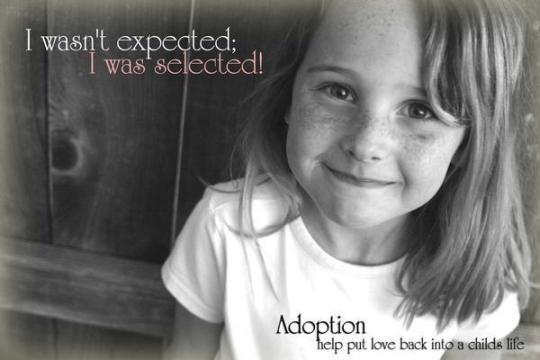
A meme promoting adoption (click for credit)
This past weekend, I spoke at the Sioux Empire Christian Home Educators Convention. I have spoken there at least twice before, and I have not been disappointed. This weekend was no exception. I met a lot of really interesting people, including one second-generation homeschooling mother who was pregnant with her middle child at the same time her mother was pregnant with her youngest sibling. What an incredible experience that must have been!
In contrast to that situation, I had a nice, long talk with a gentleman who related his adoption story to me. Being an adoptive father myself, I am always interested in hearing such stories, but this one was unlike anything I had heard before. He and his wife had several children of their own, but they are all grown up and out of the house. Because he and his wife had “extra time” on their hands, and because they genuinely wanted to serve “the least of these,” they decided to become emergency foster parents for babies who are abandoned. In that role, they care for the infant until he or she can be permanently adopted. He told me that it doesn’t usually last very long, because lots of people are looking to adopt infants.
However, one of their emergency foster children (a little girl) had serious digestive issues pretty much at birth and spent a long, long time in the hospital. In fact, the poor little girl had to have a lot of her small intestine and all of her colon removed, which meant she couldn’t eat normally. Essentially, she had to be continuously fed through a tube. This made her long-term prognosis questionable, and as a result, the agency could not find a permanent home for her. After much prayer, he and his wife decided to adopt her.
The good news is that the girl is now 3 years old, and while she still has some special nutritional needs, she can eat normally. However, because of the way she got nutrition for so long, she actually doesn’t like to eat. Thus, they are working on getting her to enjoy eating. I rejoiced with him that his daughter’s long-term prognosis is now very good, and eventually, the conversation turned to the effects that an adopted child’s previous traumas have on her future life. On that topic, he offered me a profound insight.
I naively thought that since most of his daughter’s trauma happened very early in life, she wouldn’t be affected by it. After all, since she had been with them for three years now, she probably doesn’t remember much of it. He immediately set me straight on that point. I am paraphrasing here, but this is close to what he said:
Imagine that from the time you are born, you are put in a lonely room. Most of the people who interact with you cause you pain. They stab you with needles, they put tubes up your nose, they cut you open, etc. Of course, they are helping you, but you don’t know that. So you kick, scream, bite, and fight, but it doesn’t matter. Every now and then, someone comes in and holds you, talks lovingly to you, and sings to you, but those times are rare compared to the other times. What do you think that does to your view of the world?
I was stunned. Of course it’s nonsense to think that children “forget” the trauma they experience just because they are infants. He went on to describe the current behaviors his daughter has that can be traced directly to her hospital experiences. I am just so glad that he and his wife are slowing convincing this young girl that there is love in the world for her!
Interestingly enough, I learned about another adoptive parent at the conference, but he isn’t someone I have ever met. His name is Larry Alex Taunton, and he is a journalist who began the Fixed Point Foundation, a Christian apologetics organization. Over the years, his organization has arranged several high-profile debates between Christians and atheists. He recently wrote an incredibly interesting book entitled, The Faith of Christopher Hitchens. It is about his close friendship with one of the world’s most prominent New Atheists. I plan to review that book at length, perhaps in my next post. However, I wanted to relate his adoption story as well, since it also involves a young girl who faced medical issues.
Taunton and his wife were working on adopting Sasha, an 10-year-old Ukranian orphan. In his book, Taunton says that he was discussing the matter with Hitchens, listing off all the medical problems Sasha might have. It’s quite a list, including things like fetal alcohol syndrome, HIV, rickets, etc. Here is his account of Hitchens’s reaction:
And you’re still going to do it?…I am glad there are people like you in the world, really I am, but I cannot for the life of me understand why you would do it. (p. 107, emphasis his)
Obviously, Taunton and his wife did it because they think it is part of what they as Christians should do. Hitchens, of course, just couldn’t understand that. Now it turns out that Sasha is, indeed, HIV-positive. Nevertheless, here is how Taunton sums up his thoughts on her adoption:
…whatever blessing we have been to Sasha, she has been to us tenfold. (p. 110)
This simple statement echos my thoughts when it comes to my adopted daughter, Dawn. I mentioned the statement to the man I discussed previously, and he heartily agreed as well. I am not saying that all adoptions are blessings; I am just saying that the three of us feel that way.
While Christopher Hitchens can’t imagine why any of us would adopt children with trauma in their past, I can explain it easily. Christ tells us, “…to the extent that you did it to one of these brothers of Mine, even the least of them, you did it to Me.” (Matthew 25:40b) Because we love Christ, we love our adopted children, regardless of their past trauma.
I want to end with this account, straight from Taunton’s book. I can imagine that this is just one of the reasons Sasha has been such a blessing to him:
Sasha’s faith is simple, genuine, and fearless. She is the boldest evangelist I know. Once, following my first debate with Michael Shermer, Sasha decided to confront the unfortunate atheist because he had said that human suffering led him to conclude that God did not exist. Sasha, who knows a thing or two about suffering, began unpacking her testimony, telling him that suffering had led her to an opposite conclusion: “God is there and He hears us.” Shermer looked trapped. Amused, I confess that I felt sorry for him. What was he to do with this girl whose intensity was matched only by her belief in the God he had spent the evening denying? To his credit, he took his scolding like a man. (p. 109)
April 28, 2016
Nimrod: A Story of Relentless, Unconditional Love
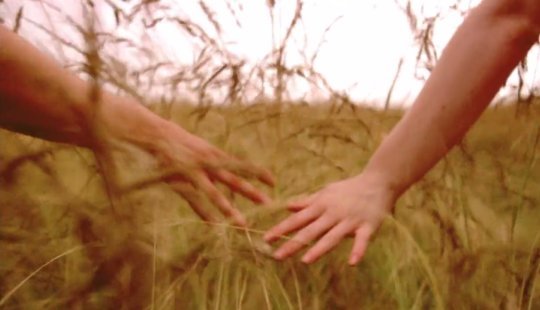
Several years ago, I was given a script by an incredibly talented artist named Christopher Stout. It was for a short film that explored sexual abuse in children and its negative effects on sexuality in later years, and he was looking for investors to help make the film a reality. I immediately fell in love with the story, but since I was not at all familiar with such issues, I decided to get a second opinion. I gave the script to someone who is very, very dear to me who experienced sexual abuse as a child, and I asked her to read it. When she said that she loved the story, I knew it was time to invest.
The film was completed in 2005, and I was fortunate enough to attend the premier. The audience loved it, and I was both proud and honored to have played a small role in such a wonderful work of art. Recently, the author decided to release it on Vimeo to be viewed for free, and I want to share it with my readers.
I have filed this post in my “Christian Drama” category, although the film is not overly Christian in any way. However, I consider it a Christian film because while the main character is romantically in love with the leading lady, he models the relentless, unconditional love that Christ has for all of us. The healing that you see in the film is the same kind of healing that Christ’s love can accomplish.
Before you view this film, I would like to offer a word of warning. While the film would probably not even earn an “PG” rating in today’s film rating system, it does deal with sexual issues, specifically those that result from sexual abuse. Thus, it might not be appropriate for all viewers.
Nimrod from Christopher Stout on Vimeo.
April 25, 2016
How Christianity and Science Can Interact
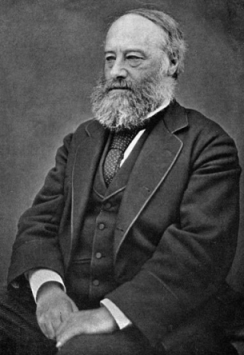
James Joule, one of the 19th century’s most important physicists.
Over the past few years, I have been writing a series of elementary science courses for home educated students. Since the courses discuss scientific concepts in chronological order, I have spent a lot of time learning the history of science. In the process, I have found that a lot of what I was taught in school (including university) about how science developed is simply false. I have also become acquainted with the views of many great scientists from the past, which has allowed me to learn from them. I want to discuss one of those great scientists in order to share something I have learned.James Joule was born in 1818. Because his father was a successful brewer, chemistry was in his blood. He was taught at home for many years, and then his father sent him to study under John Dalton, the founder of modern atomic theory. Dalton suffered a stroke two years later, but his influence on Joule continued long after he stopped teaching. Even though Joule ended up taking over the family brewery, he spent a lot of time doing experiments, mostly focused on trying to explain electricity and magnetism in terms of Dalton’s new atomic theory.
However, the more experiments he performed, the more interested he became in the heat that was generated in electrical systems. As he studied heat, he eventually demonstrated that he could convert mechanical energy into heat. This allowed him to argue that heat is just another form of energy, which went against the scientific consensus of his day. Of course, today we know he was correct, and because of that, the standard unit for measuring energy is named after him (the Joule).
Joule was a Christian, and one of the reasons he studied science was to learn more about the nature of God. In a set of notes for a lecture that he never gave due to failing health, he wrote:1
After the knowledge of, and obedience to, the will of God, the next aim must be to know something of His attributes of wisdom, power and goodness as evidenced by his handiwork…It is evident that an acquaintance with natural laws means no less than an acquaintanceship with the mind of God therein expressed.
I have used that quote a lot in talks that I have given, because I think it expresses a deep truth: We can learn something about the nature of God by studying His creation. Indeed, that’s the main reason I study science today. In addition, many of the students who use my science courses tell me that it’s one of the reasons they are planning to go into science as a career.
While I don’t want to diminish the importance of that truth, there is another truth that we can learn through the scientific work of James Joule. Remember, we honor him today because he demonstrated that the scientific consensus of his day was wrong when it came to the nature of heat. At that time in history, natural philosophers (the standard term for scientists back then) believed that heat was a self-repelling fluid, which was called “caloric.” When something was hot, there was a lot of caloric, and when something was cold, there was little caloric. Heat flows from hot things to cold things because caloric is repelled from itself. Thus, it strives to flow away from where there is a lot of it and travels to where there isn’t much of it.
This theory was pretty successful in explaining many experiments that dealt with heat, and it was proposed by Antoine-Laurent de Lavoisier, one of the most important chemists of the 18th century. Between the weight of the experimental evidence and the fame of the theory’s author, there were few who were willing to question it. However, Joule did. Why? Well, there were lots of experiments that showed heat could be converted into mechanical motion. Since it was clear that mechanical motion isn’t a fluid, that meant the fluid known as caloric would have to be destroyed to make this mechanical motion. In addition, Joule showed that under the right circumstances, mechanical motion could be converted into heat. That meant mechanical motion must also be able to produce the fluid.
That didn’t sit well with Joule. Why? Here are his own words:2
…we might reason a priori that the absolute destruction of living force can not possibly take place because it is manifestly absurd to suppose that the powers with which God has endowed matter can be destroyed, any more than they can be created, by man’s agency.
In other words, Joule thought that heat couldn’t be a fluid, because it should be impossible for man to create and/or destroy something that is such a fundamental part of God’s creation. As a result, he decided heat must be just another form of energy. Of course, we now know that he was correct.
So what’s the point? The first quote by Joule indicates that science can tell us something about the nature of God. However, the second quote (and the success of the idea that it fostered) tells us something else: The nature of God can tell us something about science. It was Joule’s concept of the nature of God that allowed him to go against the scientific consensus of his day and produce a new description of heat – a description that we now know is correct!
Now if Joule were the only example of a scientist who used his concept of God’s nature to advance science, I wouldn’t take this as a general lesson. However, throughout the history of science, we see scientists whose concept of God’s nature has influenced their science in an incredibly positive way. Copernicus put the sun at the center of the universe because of his concept of God. Newton went against the scientific consensus of his day and applied the mathematics he discovered about gravity on earth to all the planets because of his concept of God. Even some modern-day scientists still use their concept of the nature of God to advance science. To date, the only working theory of planetary magnetic fields comes from one physicist’s idea of how God might have created planets. In addition, the 2010 Outstanding Contribution to Innovation and Technology award was won because of work inspired by the lead investigator’s view of God and His creation.
I wonder how many other scientific revolutions could happen if more scientists allowed their view of the nature of God to impact how they do their scientific research.
REFERENCES
April 21, 2016
Trees Exchange Nutrients Through an Underground Network!
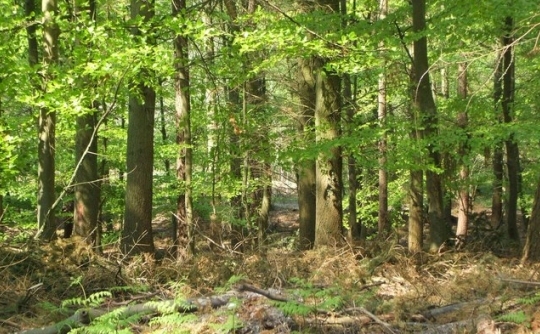
This forest contains Norway spruce and larch, two of the trees studied in the experiment that is being described. (click for credit)
Ever since I learned about it, the phenomenon of mutualism has fascinated me (see here, here, here, here, here, here, here, here, and here). If you aren’t familiar with the term, it refers to a situation in which two or more organisms of different species work together so that each receives a benefit. One of the most common examples of this kind of relationship is found among fungi and plants (see here and here). The fungi (called mycorrhiza) extract nutrients from the plants, but in exchange, they provide the plants with critical nitrogen- and phosphorus-based chemicals that the plants have a hard time extracting from the soil. As a result of this relationship, both the plants and the fungi thrive. It is not surprising, then, that the vast majority of plants in nature form relationships with mycorrhiza.
Swiss researchers were recently studying trees in a forest, and they learned something rather surprising about these mycorrhiza. They facilitate the exchange of nutrients between different trees in a forest, even trees of different species!1 Why is this so surprising? Well, it is thought that trees in a forest are in constant competition with one another. They compete to expose their leaves to the sunlight so they can produce more food via photosynthesis. They compete for the nitrogen- and phosphorus-based chemicals that they must absorb from the surrounding soil. They even compete for the water in the soil. Despite this perceived competition, however, there seems to be at least some cooperation as well.
How did the researchers discover this surprising fact? They used a crane and several specialized tubes to expose the leaves near the top of some Norway spruce trees to carbon dioxide that had much less carbon-13 in it than the carbon dioxide naturally found in the air. Most of the carbon in naturally-occurring carbon dioxide is carbon-12, but there is a small amount of carbon-13 in it as well. Carbon-13 is just as stable as carbon-12, and it is also chemically identical to carbon-12. However, it is heavier than carbon-12, which allows scientists to distinguish between the two.
After exposing the trees to the special, carbon-13-depleted carbon dioxide, the researchers analyzed the carbon found in various parts of the exposed trees, the surrounding unexposed trees, and the different species of plants and fungi on the forest floor. They found that they were able to trace the products of this special carbon dioxide, and it showed up in very specific places.
They compared the flowering plants on the forest floor (like
around the exposed trees to the same plants that were on the forest floor far from the exposed trees. They found no difference in the amount of carbon-13 in those plants. This told them that the special carbon dioxide they were using didn’t contaminate the forest floor. However, when they examined the roots of the exposed trees, they found products of photosynthesis that had depleted carbon-13 in them. That means the leaves had absorbed the special carbon dioxide, used it in photosynthesis, and transported the products to the trees’ roots. That’s not surprising, of course, since the products of photosynthesis are transported throughout a tree.
The surprising part was when they examined unexposed trees that were near the exposed trees. While they found no significant amount of depleted carbon-13 in the branches of those trees, they did find a significant amount of depleted carbon-13 in the roots of those trees. In other words, the leaves of the unexposed trees didn’t accidentally get exposed to the special carbon dioxide, but photosynthesis products from that special carbon dioxide were found in their roots!
How in the world did the photosynthesis products from the special carbon dioxide end up in the trees that weren’t exposed to it? To answer that question, the researchers examined the carbon in the fungi that exist below the forest’s soil. They found that while the non-mycorrhizal fungi didn’t have carbon from the special carbon dioxide in them, the mycorrhizal fungi did! That means the mycorrhiza transferred the photosynthesis products of the exposed trees to the roots of the unexposed trees! In addition, the researchers found that these photosynthesis products even ended up in trees that were of a different species than the exposed trees!
How much transfer occurred between the exposed trees and the unexposed trees? The researchers estimate that about 4% of the exposed-trees’ photosynthesis ended up in the unexposed trees. As a news story based on this study says:2
An increasing number of studies show that belowground ecosystems are highly complex and diverse. Klein et al.‘s study adds a new dimension to this, revealing that substantial amounts of carbon can move from one tree root system to another.
Obviously, we have a lot more to learn about this process, but the very fact that it exists adds an entirely new network to the phenomenon of mutualism.
The more we study the creation, the more awe I have for its Creator!
REFERENCES
Jay L. Wile's Blog
- Jay L. Wile's profile
- 31 followers


